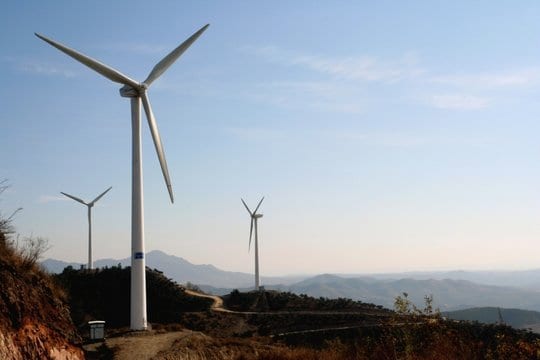Continued technological advancements are expected to continue reducing the cost of wind energy, according to a new survey of leading wind experts conducted by Lawrence Berkeley National Laboratory.
According to a new article published in the journal Nature Energy, Expert elicitation survey on future wind energy costs, the results of a survey of 163 of the world’s foremost wind power experts were outlined in an effort to better understand the future of wind energy costs and the possible technological advancement.
Specifically, the surveyed experts anticipate wind energy cost reductions of at least 24% to 30% by 2030, and 35% to 41% by 2050 due to larger and more efficient wind turbines, lower capital and operating costs, and other advancements, as laid out below.
The study was led by Ryan Wiser, a senior scientist at Berkeley Lab, and included contributions from other staff from Berkeley Lab, the National Renewable Energy Laboratory (NREL), the University of Massachusetts, and participants in the International Energy Agency Wind (IEA) Wind Technology Collaboration Programme Task 26.
“Wind energy costs have declined dramatically in recent years, leading to substantial growth in deployment,” explained Wiser. “But we wanted to know about the prospects for continued technology advancements and cost reductions.
“Our ‘expert elicitation’ survey complements other methods for evaluating cost-reduction potential by shedding light on how cost reductions might be realized and by clarifying the important uncertainties in these estimates.”
The study looked at three wind applications — onshore, fixed-bottom offshore, and floating offshore. Unsurprisingly, typical onshore projects are expected to remain considerably less expensive than its offshore brethren, while fixed-bottom offshore will be less expensive than floating offshore.
However, according to the report, and as shown below, there are greater absolute reductions, as well as more uncertainty, in the levelized cost of energy for offshore wind as compared with onshore wind.
Despite expected cost reductions, there is still “substantial room for improvement,” and the experts predicted that there could even be a 10% chance that reductions will be more than 40% by 2030, and more than 50% by 2050.
The report also identified five key drivers for wind cost reductions: up-front capital cost (CapEx), ongoing operating costs (OpEx), cost of financing (WACC), performance (capacity factor), and project design life. We have seen up-front costs for wind projects decline over the last few years, at the same time as turbine performance has increased, making wind energy ever more cost-efficient and -effective.
The survey reports that the size of wind turbines (capacity factor) will be a key factor in future declining costs. Average onshore turbine generating capacity is expected to reach 3.25 MW in 2030, while rotor diameter and hub height will also increase (135 meters and 115 meters respectively in 2030).
“Onshore wind technology is fairly mature, but further advancements are on the horizon — and not only in reduced up-front costs,” explained Wiser.
“Experts anticipate a wide range of advancements that will increase project performance, extend project design lives, and lower operational expenses. Offshore wind has even greater opportunities for cost reduction, though there are larger uncertainties in the degree of that reduction.
“Though expert surveys are not without weaknesses, these results can inform policy discussions, R&D decisions, and industry strategy development while improving the representation of wind energy in energy-sector and integrated-assessment models.”
Source: CleanTechnica. Reproduced with permission.














